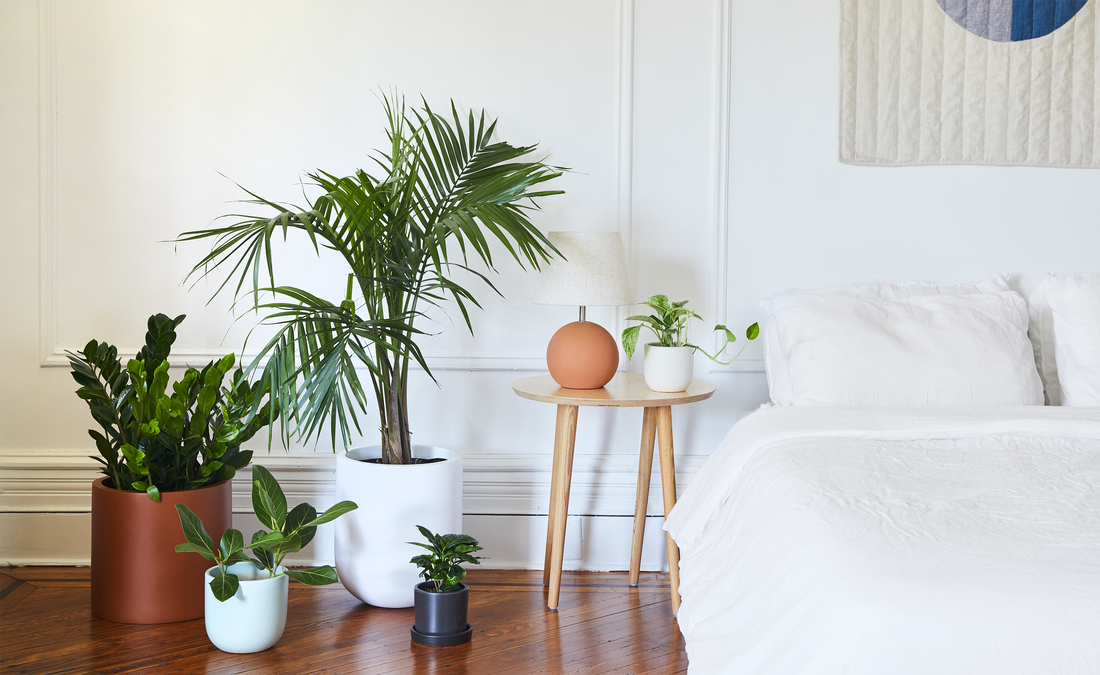
Plants 101
Plant Care for Large Plants

Larger plants are a wonderful way to transform your space into a lush and tranquil tropical paradise. Here’s some things to keep in mind when bringing a larger plant home...
1. Size
When picking a large plant for your space, choose a plant that is mature but still petite in size. For example, a plant that's 2–4 feet in height in it's planter. This will ensure you have plenty of space in your home or office to let your new plant grow into it’s full indoor potential once adapted to your space’s conditions.
2. Water
Larger plants have a higher volume of potting mix given their bigger grow pot or planter, which means they'll generally need less frequent waterings. Depending on the species of your large plant, this can range anywhere from watering every 1–4 weeks. Always check the potting mix before watering. If you don't want to stick your fingers deep into the soil to check for moisture, try a moisture meter. Pro Tip: if your planter has a drainage hole, you can use a turkey baster to remove excess water from the saucer to prevent having to pick up a heavy container to dump the water that accumulates in the saucer after watering.
3. Light
Larger plants need brighter light to help them retain their mass of well-established foliage. Even varieties that are popular for being low light tolerant, like the Snake Plant and ZZ Plant, will benefit from being placed in brighter conditions given their size. Pro Tip: you don't have to miss out on large plants if your space is dim—just add supplemental lighting.
4. Potting
Good news: larger plants that are in large containers take longer to outgrow them, which means you won’t have to re-pot on a yearly basis like you might do with some of your smaller, tabletop plants. Most likely you'll find yourself repotting your large plant every 2–3 years, depending on species and its active growth. That said, consider fertilizing your large plants after the first year to ensure they have the nutrients they need to continue growing until they need to be repotted into a larger planter.
5. Propagation
Larger plants are more mature, making them easier to propagate. You'll have plenty of extra plant material to work with, and can propagate without feeling like we have reduced the size of our plant drastically.
6. Leaf Cleaning
Cleaning your plant's leaves occasionally is important for all houseplants, but the larger ones need it especially. When your plant's leaves are covered in dust and debris, it can prevent chlorophyll from absorbing the sunlight plants need for photosynthesis! Use a microfiber towel or soft sponge to clean your plant's leaves, using a dilution of 10% lemon juice or white distilled vinegar in water.

Words By The Sill
Empowering all people to be plant people—a collection of articles from The Sill's team of plant experts across a variety of plant care topics to inspire confidence in the next generation of plant parents. Welcome to Plant Parenthood™.
Do Some Plant Shopping